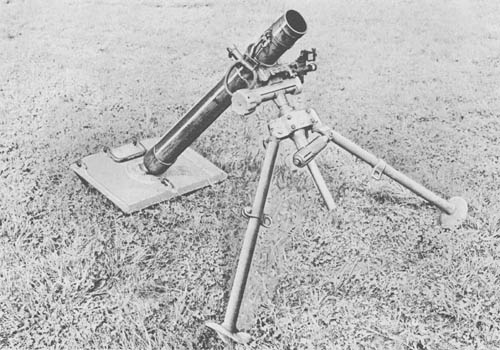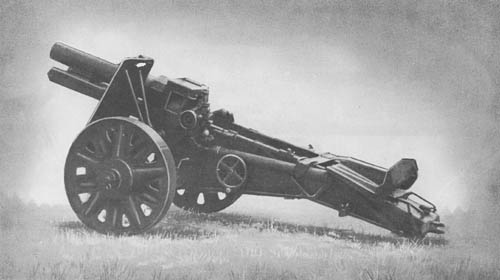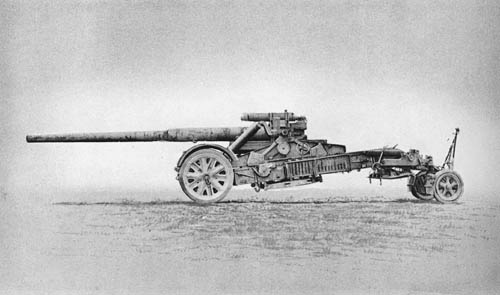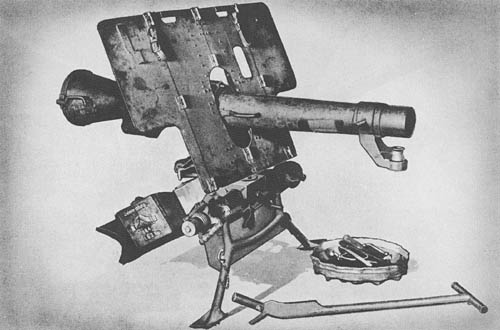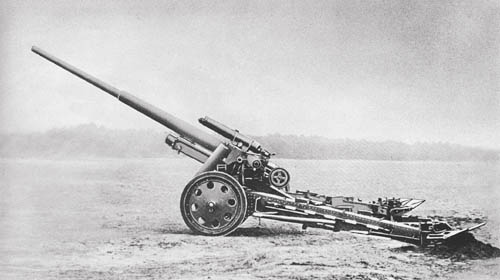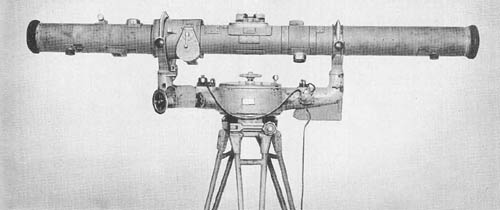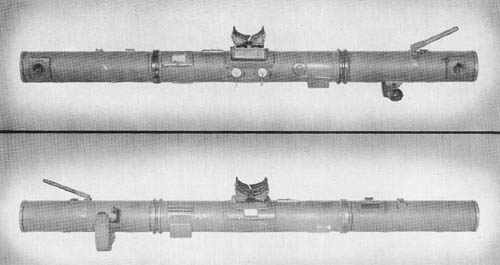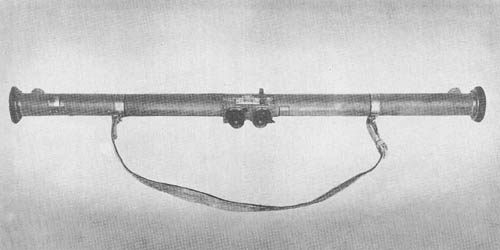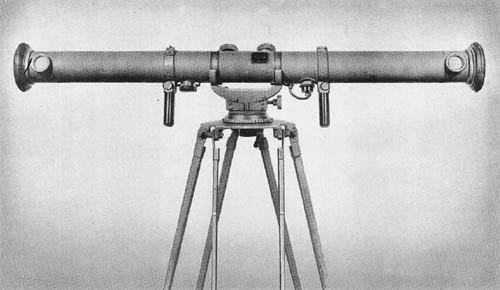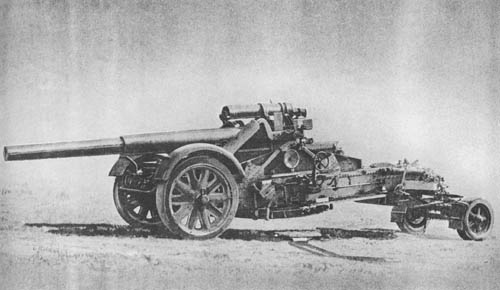
The 21 cm Morserlafette 18 is the standard heavy howitzer in use by German troops. The piece comprises a loose barrel, half jacket, and breech ring. A lug on the collar of the barrel secures it to the breech ring; ring and jacket are fastened together by a key which fits into a key way in the latter. The ring, jacket, and barrel are clamped together by a securing ring at the front of the jacket.
During recoil, the piece is supported by a pair of rollers below the jacket and another pair under the rear of the breech ring. A bracket at the top of the breech ring receives the piston rod, and a lug on its lower face receives the buffer piston rod.
The breechblock is of the horizontal sliding block type. On the rear face of the breech ring is a lever which operates (a) a plunger in a vertical boring in the bottom of the breech opening, and (b) a catch engaging a slot in the buffer nut interlocking the breech mechanism.
The carriage is interchangeable with that of the 17 cm K. mit Mrs. Laf. 18, with the exception of the following points: the safety limit of recoil of the upper mounting is 58.27 inches, whereas in the case of the 17 cm K. mit Mrs. Laf. 18 it is 56.30 inches; and the air pressure in the compensators is 464 lb./sq. in. against 626 lb./sq. in. in the case of the 17 cm K. The latest model of the 21 cm and 17 cm Mrs. Laf. 18 carriage is equipped with a pivot platform attached to a supporting frame situated near the center of the lower carriage body, which allows complete and continuous 360° traverse.
SPECIFICATIONS
| Caliber | 21 cm (8.27 ins.) | |
| Weight of gun in action | 18.5 tons | |
| Weight of piece | 5.79 tons | |
| Length of howitzer (travelling) | 41 ft., 2 ins. | |
| Length of bore | 17 ft., 3 ins. | |
| Length of chamber | 25.31 ins. | |
| Number of grooves | 64 | |
| Rate of fire | 1 rd./min. | |
| Muzzle velocity | 1,854 f/s | |
| Range (maximum) | 18,263 yds. | |
| Elevation | 70° | |
| Traverse | 16° (360° with the pivot platform) | |
| Ammunition | High-explosive (wt. 249 lbs.) | |
| Anti-concrete shell (wt. 268 lbs.) |
German: p. 101
